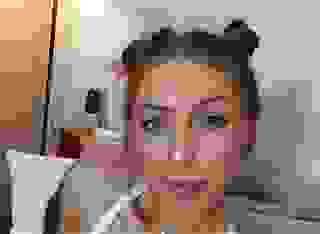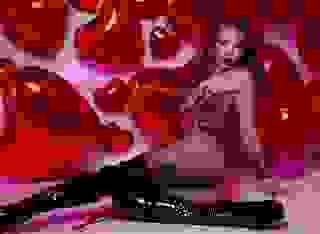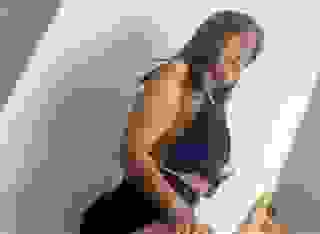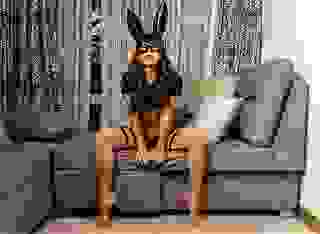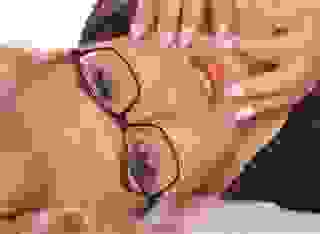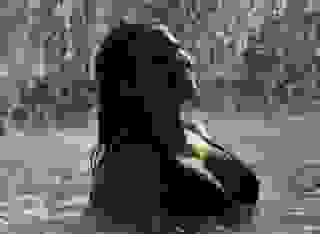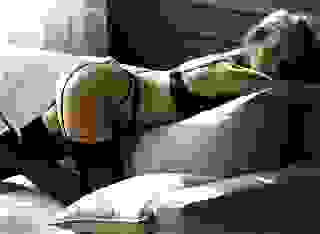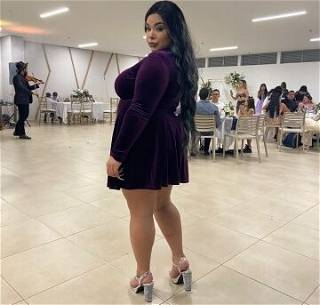Note: You can change font size, font face, and turn on dark mode by clicking the "A" icon tab in the Story Info Box.
You can temporarily switch back to a Classic Literotica® experience during our ongoing public Beta testing. Please consider leaving feedback on issues you experience or suggest improvements.
Click hereThe computer beeped and its screen displayed my project identification number with the message "PROFILE AVAILABLE". After Karen entered a few more keystrokes, the profile information appeared on the screen.
Karen expertly scrolled through the profile information fairly quickly. Neither her words nor expression revealed much reaction to what she saw.
After a few more keystrokes, Karen said, "Tom, why don't you hit the 'RETURN' key."
I did.
"You've just sent your project's information to the Special Collections world, Tom. Let's take a walk, shall we?"
We walked through a connecting door from the laboratory into another room. It looked more like a scaled down version of the larger lab. There was a lab examination table complete with a magnifying light on an articulating arm, a projecting microscope with stereoscopic eyepieces and a video camera, a hand magnifying glass, a 24-inch computer display, some plastic probes, various measuring scales, and some boxes of cotton gloves.
"The digital photography we did in the other room is top-of-the-line, but we still have nothing that beats the human eyes and brain. One of our three full-time employees is a fully qualified and certified forensic documents examiner. This room is her domain. For example, if there is any question about the authenticity and authorship of the letter with your articles, she'll do a detailed examination of the document."
Karen pointed toward two very large brushed steel bank vault doors on one wall. They looked as if they could withstand any kind of attack.
"Each door is the only entrance and exit to our secure storage vault and evidence storage vault. The secure storage vault is considerably larger than the evidence storage vault. Items here for temporary or permanent storage are kept in the secure storage area. Items that are or may become evidence in criminal investigations are stored separately in the evidence storage vault."
"Criminal investigations? You mean like stolen artworks or forgeries? Wouldn't the investigating agency retain and store own evidence? Why would they store it here?" I asked.
"Very good questions, Tom. The answer is that antiquities of any kind generally require more careful environmental controls during storage. Unlike the room we're in now and most of the rest of the building, those rooms are maintained at a constant temperature and humidity.
Antiquities require special care and handling during processing above and beyond what normal evidence requires. There's more chance of incidental accidental damage in a police evidence room than here. The fact is, we probably have tighter access control and chain-of-custody controls than most any law enforcement evidence facility."
We walked back into the laboratory, then out into the hallway.
Karen opened the first of the three doors we had passed coming in. It was essentially a tiny efficiency apartment with a single queen-sized bed, a kitchenette with small refrigerator and two microwave ovens, a small dinette table and chair, a television, a love seat and coffee table, and a bathroom with shower.
"Maybe five or six times a year we get rush jobs or jobs so complex that one or two of us have to stay here overnight. We have to sometimes work with someone during their normal business hours half way around the world. This apartment and the one on the other side of the one in the middle are identical. The room separating the two apartments is the utility and life safety control room. Because our computer servers are in the utility room, that room and the two living areas have their own separate HVAC systems and controls.
Even if I'm not staying overnight, if I come in to do paperwork or something on weekends, like today, I'll often work in one of the apartments rather than my own office."
"Do you feel safe staying in this building alone and at night? I mean, this looks like an industrial area near the airport."
Karen became quite serious. "This may be the safest and most secure building the University has, Tom. I know it looks pretty dilapidated on the outside, but structurally it's stronger than the proverbial Fort Knox. It's outward shabby appearance is intentional so it doesn't attract attention at all. Like you said, you drove by it twice before you saw the number on the door. The design of this building involved both the University's architect and its theatrical set design department. They actually enjoyed applying their diverse talents in the design and construction of this building. Its World War II appearance is effectively a stage set created to hide an ultramodern laboratory and its contents.
I won't go into all the physical barriers, access controls, intrusion detection and verification systems, and life safety systems, but suffice it to say, if some country launched a nuke with our community at ground zero, this is the building you'd want to be in. And if we hit the duress alarm, we have more cops here in two minutes than Donut Heaven has waiting when it opens on National Free Donut Day."
Karen's smartphone emitted an odd ringtone. She glanced at the screen, then hit a touchscreen button, then returned the phone to her dress pocket.
"You might like this, Tom. Since we have only three full time employees and two part-time interns here, we don't usually operate around the clock. The three of us who are employees have smartphone apps that are tied to the worldwide network. Any time a response to one of our inquiries or actions comes back or if a high-priority request comes in from any member, the responsible employee gets notified immediately on our smartphones. The message I just got notified me I have a response to an inquiry I sent out last week. As the responses start coming in for your inquiry, I'll be notified on my smartphone. Unless the response is slugged with a higher priority by the responder, we don't need to come in and check replies until the next business day.
Well, that pretty much wraps up the guided tour, Tom. Shall we go back into the lab and get your book? Incidentally, if my visual examination of your book produces any additional information, I can immediately append it to the message we just sent out on the worldwide system.
By the way, there are restrooms down the hall across from my office if you need one."
We walked back into the laboratory. Karen pulled a fresh pair of cotton gloves for both of us out of the drawer.
While she carefully replaced the items in the box, I asked her how she happened to become the Director of Special Collections.
"Special Collections was at Main Library until the big book theft about fifteen years ago. You probably never even heard of that crime, have you?"
I hadn't, but recalling Bethany's suggestion to ask Karen about her background, I asked if the theft had anything to do with how she and Special Collections had ended up at the abandoned military side of the airport.
Karen's eyes sparkled with excitement. Clearly it would be a story she enjoyed telling.
"Back in 2002 Special Collections was at Main in the basement by the loading dock. Two professional antiquities thieves had cased the library to steal the three most valuable books in Special Collections. They had been commissioned by an unscrupulous collector to steal those specific books.
At that time the Library's security procedures and intrusion detection system were for all intents and purposes nonexistent. The thieves had no difficulty completing the theft. That was bad enough, but to make matters even worse, the theft wasn't discovered for almost ten days. By that time, the crooks were long gone and had taken the books out of the country.
At the time I was working on my master's in analytical chemistry. I thought I wanted to be a crime scene investigator just like on TV. I was twenty-one. I had received my POST certification and was working as patrolman at the University PD to get some experience and earn tuition money.
The UPD detective assigned to the theft case needed a go-fer to help. I volunteered. As time passed and leads dwindled, he had to move on to more solvable crimes. The theft had been a big deal to the University at first, but it had been small potatoes for the state police and the feds. The detective's lack of experience with antiquities plus little help from the state and feds almost forced the UPD to cold-case it and move on.
I had read all his reports and had made a lot of the initial contacts with the specialists who investigate these thefts in other departments throughout the world. I asked the Chief if I could work the cold case as a project. I don't know if he was being patronizing or if he was remarkably prescient, but he told me to go ahead.
I found that most of the other antiquities investigators we had contacted were more willing to work with me. They understood that I was pretty much a rookie patrolman, but it didn't matter to them. Someone with commitment and interest impressed them. It turns out that a lot of their employers put antiquities thefts and destructions one notch above investigating unpaid parking tickets. It didn't hurt that I was working for my MS in analytical chem, either.
I found that I had an unnatural affinity for the science side of antiquities crime investigations. I made slow but steady progress on the book theft, but more important our university was getting a very positive reputation in the antiquities and arts communities.
By 2006 I was the lead detective on it. Actually, the only detective. Working that case resulted in my making a lot more and deeper contacts in the world of institutional antiquities preservation, storage, and security.
Anyway, because of diligent detective work by the Tokyo Metro Police Department rather than much skill on my part, in 2006 I was able to work with TMPD and our State Department to identify, arrest, and extradite the two mutts who had stolen the books from our library here. It took several more months to find and retrieve the books and return them to our library collection, though. We hadn't exactly solved the crime of the century, but the University gave UPD accolades for not giving up.
About that time the Library's former Director of Special Collections retired, and the University administration convinced the Police Department to temporarily detail me to help reorganize Special Collections. When I turned in my report and recommendations, I figured that was the end of it and I'd be back investigating car and dorm burglaries and drug cases. My report had made some pretty aggressive recommendations that really amounted to demonstrating the value of Special Collections could have to the entire University.
I figured they'd politely thank me, give me a letter of commendation in my file, then file the report in the darkest corner of the Library where it would gather dust and eventually become dust.
Somehow one of the Regents, a retired FBI muckety-muck, got hold of my report and actually read the blasted thing. He saw something that piqued his interest, so he led the charge to get a couple of federal grants. He was able to get everything funded. He also worked with the University's Public Affairs Director to launch an information and PR campaign. Finally, he insisted the University detail me as the interim Director to implement Special C's reorganization.
That was several years ago. Apparently hiring someone with a sciences background and an interest in CSI as well as library collections administration has caught on. Our little University's Special Collections Department became somewhat of a model for other colleges and universities to follow.
On paper we're still a part of the University Library, but the reality is that we coordinate the acquisition, preservation, storage, and display of the various special collections that are in almost every department in the University. Many of those are more things of collectible interest than valuable antiquities, but they're important nonetheless. Like I said, we do it with only three full-time employees plus two upper level student interns. The cost savings to each of the participating departments has surprised even them."
"Wow. I wonder how many students even know about this place and what you do? I certainly didn't." My compliment was sincere, and Karen seemed to appreciate my recognition of her department's work.
"Very few students are fully aware of it, Tom. Faculty and staff generally are. Several other universities and colleges throughout the world as well as several law enforcement agencies are. The various university and college systems of special collections have very quietly become resources for the entire antiquities community. It is a quiet community, though. We don't advertise what we do. One of the areas we're working hard in is the protection of antiquities in various countries from terrorist and insurgent groups who are bent on destroying them."
She had carefully put all my material back in the original shipping box. I picked it up and followed her back into the room with the vaults and examination cubicles. Once in the other room, she carefully unpacked it again and set the shipping box and packing material aside.
She fairly quickly completed a visual examination of the internal decorative box, noting it seemed unremarkable.
The cloth that had wrapped my photo book drew a closer examination. With an amazingly tender and delicate touch, Karen carefully laid the cloth out flat on the table and smoothed out any wrinkles. Then she turned on an odd-looking light and pointed it at the cloth. After turning off the room lights, she varied the light's angle of incidence and its color. Finally she stopped and asked me to take a closer look through the hand magnifier.
"What do you see, Tom?"
"It looks like the faint image of a bird," I said.
"It is a bird, Tom. Specifically, it's a crane. The image is repeated several times on the cloth. It's very, very subdued. I thought I caught a glimpse of it on one of the lab's computer photos. This is significant enough that I want to append our original worldwide system message. Some of our members may be able to add information. My guess is that this piece of cloth was manufactured in the late 19th or early 20th century in Japan. It's not something you would expect to find a contemporary publication like your photo book wrapped in."
Karen made some notes and then carefully rolled the cloth around a cardboard tube and set it aside. As she did, she explained that the cloth should be rolled rather than folded and then stored in an archival storage tube to prevent creasing and yellowing.
"Now, let's take a look at this very interesting book," she said. "Since you are the subject in the photos, Tom, I'm not going to pay too much attention to them right away. I'd like to come back and give them a much closer inspection with you later, of course. The photographer and how she knows which photos to take and exactly when to take them are fascinating, but right now I'm really more interested in this leather bookbinding. It was obviously handmade by a very, very skilled and experienced artisan.
The preliminary chemical analysis profile almost conclusively lets us rule out this leather coming from contemporary bookbinding material suppliers. The chemistry tells us this leather is from a Bovidae family and bovinae subfamily, most likely from a northern Asian yak. It definitely is not a North American animal or leather manufacturing process. It doesn't contain any of the preservatives common to western world leather manufacturing processes.
The designs on the face cover were hand-impressed, not machine pressed or stamped. They were made very quickly by someone skilled at doing it, not someone trying to carefully copy an original. The level of skill in conjunction with the grace and flow of the impressions suggest it was done by an artisan with decades of experience. Again, some of our members who get the message will be able to provide a lot more information about this.
There was nothing remarkable on the reverse of the face cover, no designs or markings or even defects in the leather."
She turned her attention to the back cover.
"Bethany's powers of observation and attention to detail are remarkable, but I'm still very impressed that she caught the ideograph on the inside right here. It's small and was also done by hand, not by a stamping press and die. In fact, I think I want to take some macro photos of it. In a few years as the leather dries and through handling, this mark will become very hard to spot. We'll never have a better time than now to photographically preserve its detail."
Karen carried the book as gently as if it were a newborn baby to the table where she had photographed the cloth. Then going through the same processes with the lights she had used to photograph the images of the crane on the cloth, she made the ideograph even clearer and sharper.
She took several establishing photos of the entire inside rear cover before zeroing in close on the ideograph. I asked why she had not put some sort of measure alongside the ideograph to document the image's size. She explained that the specialized digital camera and macro lens she was using recorded all critical distances, lighting, and angles in the metadata inside the camera's storage. It even allowed a skilled technician to calculate the depth of each impression in the leather, something a conventional measurement scale would not.
She seemed very pleased that I was interested in the photographic process. When she was finished photographing the inside rear cover and closeup of the ideograph, she said, "Here, let me show you what technicians will see when I send these photos with the metadata."
Karen brought up the camera's images on the large computer. Each image was displayed with its metadata. When she double mouse-clicked on the metadata, the image reappeared but with various arrows and points highlighted with the dimensions alongside.
"Tom, position the cursor over any particular line in the ideograph. Click on that line, then move the cursor to the 'plus' sign and use it to zoom in on the line."
I did as she had instructed.
"What does the line and its metadata tell you?"
"The XYZ table tells me the length, width, and depth of the line. Do you see anything else of interest in the image?" she asked almost smugly.
After looking at it for a few seconds, I said, "The line seems uneven as if the person making it was changing the pressure applied to press the line into the leather." I paused, then said, "So I guess someone might conclude that the line was hand-made rather than stamped in by a machine."
I looked up from the screen and at Karen. She seemed genuinely surprised at first, then broke into a wide smile.
"Excellent observation, Tom. Now I know why Bethany spoke so highly of you this morning," she said. Then she added in passing, "And from the way her voice sounded on the phone, I'm sure there were other good reasons, too."
She moved the camera equipment away and shut down the equipment, then returned the camera to the examination table.
After observing that the reverse of the back leather binding cover was unremarkable, she turned her attention to the binding itself. She first looked at the profile sheet to learn the chemistry of the binding thread. Then she turned her attention to the intersection of threads and the knots. She furiously scribbled several notes on the legal pad.
Fifteen minutes or so later, she carefully closed the book, rubbed her eyes, and pushed her chair back from the examination table. She had a look of deep thought about her.
Finally she said, "This is much more than I first thought. Much, much more," her voice trailed off into deep thought. I remained quiet.
After a couple more minutes, Karen seemed to remember that I was there with her. She snapped out of her deep thought and said, "Tom, I'm sorry. I wasn't ignoring you, I'm just ... " she shrugged, "... really puzzled." She shook her head again slowly, thinking some more.
